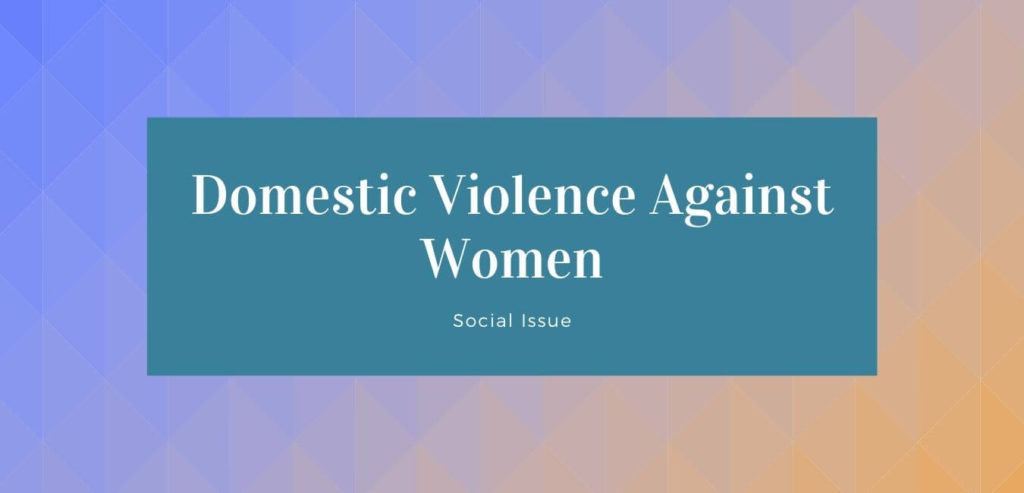Domestic violence, or intimate partner violence (IPV) as it is sometimes called, is a worldwide problem. Domestic violence against women is endemic in India. According to a former Union minister for Women and Child Development, around 70% of women in India are victims of domestic violence.
What Constitutes as Domestic Violence against Woment
Domestic violence is currently defined in India by the Protection of Women from Domestic Violence Act of 2005. According to Section 3 of the Act, “any act, omission or commission or conduct of the respondent shall constitute domestic violence in case it:
- harms or injures or endangers the health, safety, life, limb or well-being, whether mental or physical, of the aggrieved person or tends to do so and includes causing physical abuse, sexual abuse, verbal and emotional abuse and economic abuse; or
- harasses, harms, injures or endangers the aggrieved person with a view to coerce her or any other person related to her to meet any unlawful demand for any dowry or other property or valuable security; or
- has the effect of threatening the aggrieved person or any person related to her by any conduct mentioned in clause (a) or clause (b); or
- otherwise injures or causes harm, whether physical or mental, to the aggrieved person.”
Hence, the current law includes physical, emotional, sexual, verbal, and economic abuse as domestic violence.
Forms of Domestic Violence:
- Physical injury:
- It is the most visible form of domestic violence.
- The scope of physical domestic/intimate partner violence includes slapping, pushing, kicking, biting, hitting, throwing objects, strangling, beating, threatening with any form of weapon, or using a weapon.
- Physical injuries as a result of domestic violence against women are more obvious than psychological ones, and can be more easily discerned by health professionals as well as courts of law in the context of legal prosecution.
- Emotional abuse:
- It has been gaining more and more recognition in recent years as an incredibly common form of domestic violence (and therefore a human rights abuse) within the private home throughout developing nations such as India.
- Psychological abuse can erode a woman’s sense of self-worth and can be incredibly harmful to overall mental and physical wellbeing.
- Emotional/psychological abuse can include harassment; threats; verbal abuse such as name-calling, degradation and blaming; stalking; and isolation.
- Sexual assault:
- It is another common form of domestic violence. Sexual violence can include a range of forceful and non-forceful acts including unwanted kissing, touching, or fondling; sexual/reproductive coercion; rape; and marital rape.
- Honour killing
- An honour killing is the practice wherein an individual is killed by one or more family member(s), because he or she is believed to have brought shame on the family
Causes of Domestic Violence:
- Domestic violence often happens in India as a result of dowry demands.
- Strong patriarchal familial structure
- Domestic violence is often not handled as a legitimate crime or complaint, but more of a private or family matter.
- Stress is also considered as a cause of domestic violence.
Effects of Domestic Violence:
- Serious health problems often result from physical, emotional, and sexual forms of domestic violence.
Prevention of Domestic Violence against Women
- The earliest law was the Dowry Prohibition Act 1961 which made the act of giving and receiving dowry a crime.
- In 1983, domestic violence was recognised as a specific criminal offence by the introduction of section 498-A into the Indian Penal Code. This section deals with cruelty by a husband or his family towards a married woman.
- To prevent violence against women and to protect the rights of aggrieved women, the legislation “Protection of Women from Domestic Violence Act 2005” has been passed by the Parliament.
What Next:
- Under Indian law, marital rape is not a crime, except during the period of marital separation of the partners.
- Section 375 of the Indian Penal Code (IPC) considers forced sex in marriages as a crime only when the wife is below 15.
References:
- Protection of Women from Domestic Violence Act, 2005 – PDF

